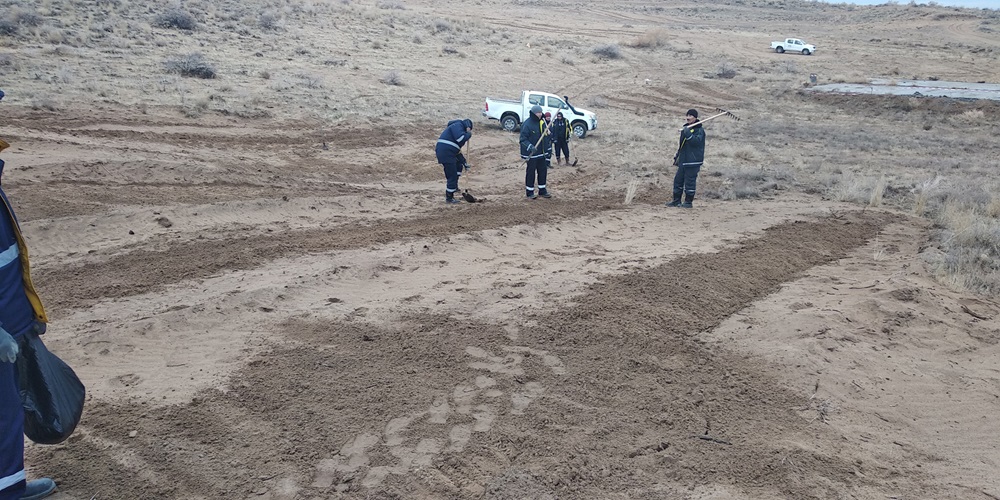
All about Kanjugan field in Kazakhstan

KATCO is a responsible mining company that complies with all environmental regulations and sets itself additional obligations. Saxauls play an important role in the region's ecosystem. For this reason, the issue of the project's impact on these trees and the offsetting of this impact has been on the agenda for a number of years in all the discussions with the Kazakh administration for the preparation of the land permit.
As a consequence, the mining activities will be offset financially and accompanied by measures to contribute to the reforestation of the steppe:
- Issuance of the land permit is accompanied by a financial offset paid to the budget of the Kazakh State, which is leading the reforestation effort referred to by the World Bank.
- In line with KATCO's environmental commitments, the facilities required for operations will be dismantled at the end of mining and the territory will be remediated and restored to its original configuration as closely as possible. Here, this will involve replanting of the trees in the steppe area concerned.
In addition to the commitments made in the context of the Kanjugan permit, since its creation KATCO has carried out numerous actions in support of the regeneration of Saxaul populations around mining areas already in operation:
- By regularly raising awareness among local populations of the importance of sustainable management of this resource (which is disappearing mainly due to local habitat factors, the trees being used it as fuelwood);
- By conducting campaigns to replant new strains in partnership with local communities. Since 2010, KATCO has already planted more than 50,000 saxauls in exploration areas.
Furthermore, KATCO will be using the ISR (In Situ Recovery) mining method for the Kanjugan permit, as it does for all the sites it operates in the country. This in situ recovery technology, now used to produce about 50% of the world's uranium, allows uranium to be extracted with a low environmental impact compared to traditional methods and generates neither mine waste rock nor tailings. The geological conditions of the area operated by KATCO are suitable for the application of this technology.
For reminder
- Kazakhstan is the world's leading uranium producer with 21,700 tonnes of uranium produced in 2018 (about 40% of global production), followed by Canada, Australia, Namibia, Niger and Russia.
- Orano and Kazatomprom (the national Kazakh operator) created the KATCO joint venture (51% Orano, 49% Kazatomprom) in 1996. The JV operates two mining sites in southern Kazakhstan (Muyunkum and Tortkuduk) and employs 1,200 people, 98% of them local workers. The scope of these activities encompasses all stages of mining the projects, from exploration to milling.
- KATCO accounted for 40% of Orano's consolidated mining production in 2018, with 3,212 tonnes of uranium produced.
